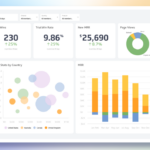As the digital age propels, so do our requests for more streamlined, proficient, and coordinated payment processing frameworks. This is particularly valid for organizations and firms exploring the complexities of electronic payments. Payment facilitator (PayFac) software sits at the helm of this evolution, continuously adapting to the dynamic needs of modern commerce.
In this blog post, we will delve into the transformative journey of PayFac software, highlighting the pivotal trends and innovations that have set the pace in this ever-evolving domain.
The Emergence Of Comprehensive Guides And Solutions
In the early days of electronic payments, navigating the world of PayFac software was akin to venturing into uncharted territory. As the demand for better, faster, and more secure payment methods grew, there was a critical need for comprehensive guides and resources. Enter the PayFac software solution guide.
These sorts of guides are instrumental in offering organizations a top to bottom comprehension of customization choices, programming abilities, and best practices. Equipped with these insights, organizations can settle on informed choices as well as upgrade their payment activities to suit their special requirements.
Shift To Cloud-Based Solutions
One of the most groundbreaking shifts in the PayFac software landscape has been the migration from traditional on-premises solutions to cloud-based platforms.
Cloud solutions offer adaptability, versatility, and cost-effectiveness. With the capacity to deal with tremendous volumes of exchanges flawlessly and with insignificant framework investments, cloud-based PayFac software made it feasible for firms of all sizes to appreciate top-level payment handling abilities.
Emphasis On Security And Compliance
During a time where data breaches and cyberattacks have become progressively wild, the accentuation on security in PayFac has never been more articulated. Developments in this space have fixated on start to finish encryption, multi-faceted validation, and tokenization.
These security measures ensure that sensitive payment data is shielded from potential threats, thus instilling greater confidence among both businesses and their clientele.
AI And Machine Learning Integration
With the advent of Artificial Intelligence (AI) and Machine Learning (ML), PayFac software has leaped into an era of predictive analytics and intelligent decision-making. AI and ML integrations allow for real-time fraud detection, risk assessment, and personalized customer experiences.
By analyzing vast datasets, these systems can identify patterns, make predictions, and offer actionable insights that were once beyond the realm of possibility.
Omni-Channel Payment Experiences
Modern consumers are no longer limited to a single platform or payment method. They switch between online shopping, mobile apps, and in-store purchases with fluidity.
Recognizing this shift, the latest PayFac software innovations focus on providing an omni-channel payment experience. This means that whether a customer chooses to pay using a credit card online, via a mobile wallet, or even through a QR code in a physical store, the payment process remains seamless and consistent across all touchpoints.
API-First Architecture
APIs (Application Programming Interfaces) have emerged as the backbone of modern PayFac software. With an API-first architecture, PayFac solutions can effortlessly integrate with other business systems, be it CRMs, accounting software, or e-commerce platforms.
This interconnectivity ensures that businesses can have a unified view of their operations, making data-driven decisions easier and more accurate.
Embracing The Global Marketplace
As businesses expand beyond borders, there’s a pressing need for PayFac software that can handle multi-currency transactions and understand the nuances of regional compliance regulations.
Innovations in this space have geared towards offering features like dynamic currency conversion, localized payment options, and automatic tax computations. Such functionalities make it simpler for businesses to tap into global markets without being bogged down by the complexities of cross-border transactions.
Conclusion
The realm of PayFac software has come a long way from its nascent stages. What was once a rudimentary tool for handling electronic payments has now transformed into a sophisticated solution that addresses the multi-faceted needs of modern businesses. The trends and innovations discussed here underscore the industry’s commitment to fostering efficiency, security, and adaptability.
As the world of commerce continues to evolve, one can only anticipate even more groundbreaking developments in the PayFac software arena, ensuring businesses are always equipped to offer unparalleled payment experiences.








